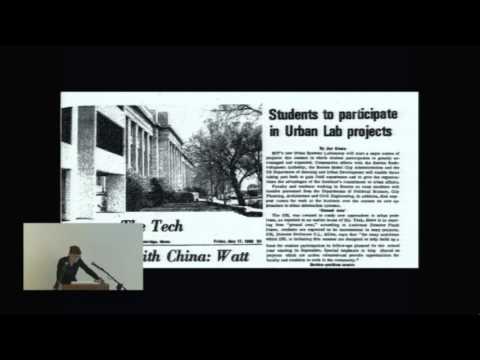
Lecture date: 2012-11-15
This talk will address the recasting of the architect’s role within the institutional context of MIT during the late 1960s and early 70s by looking at the development of techniques of controlling urban and environmental ‘systems’ and the populations who inhabited them — their monitoring, quantitative description, regulation, management, organisation and visualisation.
Focusing on the Urban Systems Laboratory and the Architecture Machine Group (Arch Mac), the talk traces how a systems-based environmental paradigm became inextricably coupled with heavily funded research into the application of computer technologies and scientific knowledge. Emerging during a period seemingly threatened by urban insurrection both at home and abroad, and in which military technologies and paradigms of governmentality were increasingly addressed to figures of insecurity, this lecture asks: for whom was this environment to be invented?
Felicity D. Scottis the Associate Professor of Architecture and Director of the programme in Critical, Curatorial and Conceptual Practices in Architecture (CCCP) at Columbia University’s Graduate School of Architecture, Preservation and Planning. Her book, Architecture or Techno-Utopia: Politics After Modernism, was published by MIT Press in 2007, and Living Archive 7: Ant Farm, appeared on ACTAR Editorial in May 2008. She is also a founding co-editor of Grey Room, a quarterly journal of architecture, art, media, and politics published quarterly by MIT Press since Fall 2000.